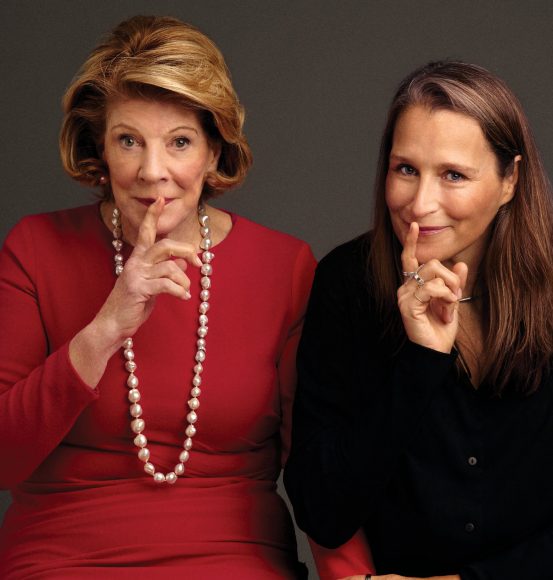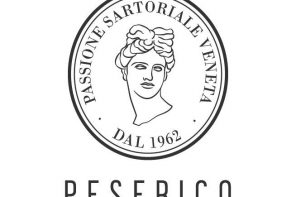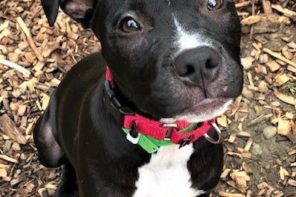Documentary filmmaker Catherine Gund has an exceptional eye for subject matter when it comes to her movie projects. Of course, it helps that she was already familiar with the people, including performance artist Ron Athey, the late Mexican singer Chavela Vargas and choreographer Elizabeth Streb. However, she probably wasn’t as well acquainted with them as she is with the subject of her new documentary “Aggie” (Strand Releasing/Aubin Pictures), which is about her mother, art collector and philanthropist Agnes Gund.
Agnes’ name may be familiar to some readers from her tenure as president of The Museum of Modern Art in Manhattan. Others may recall her incredible 2017 act of generosity when, after selling a piece of art from her private collection — Roy Lichtenstein’s “Masterpiece” — for an estimated $165 million dollars, she donated $100 million dollars from the sale to establish Art for Justice, a grant-making organization “focused on safely reducing the prison population, promoting justice reinvestment and creating art that changes the narrative around mass incarceration.” Can you even imagine a subject more worthy of a documentary?
Of course, that was director Catherine’s greatest challenge, because her mother preferred to stay out of the limelight. Nevertheless, Catherine prevailed, and you’ll be glad she did, because “Aggie” is a truly delightful and eye-opening work of art. We talked with Catherine Gund before the film’s release, Oct. 7.
Catherine, you have a history of making docs about undeniably fascinating people, including Chavela Vargas, Ron Athey and Elizabeth Streb. What is involved in your decision-making process when it comes to the subjects for your films?
“I love this question about how to identify fascinating people, because I never have set out to profile someone or make a movie about someone. It’s always been somebody who’s already in my life and then it sort of develops into this story that I feel like is always much bigger than that person. You’re absolutely right. Ron Athey was the first feature length film documentary that I made. That was another scenario where we were friends. I was friends with most of the people in the film already before I made the film. This art and this living: For me, it’s experience. It’s, Let’s make food, let’s make a movie, let’s make love, let’s make happiness, let’s make something together. A lot of these relationships have already been established in that vein and then we move on and making a movie just becomes an obvious outlet. Each case was something like that.”
“Aggie” is different from your others in that it is an especially personal project. Why was now the time to make a movie about her?
“As a documentary filmmaker, many people in her world have said to me, ‘Your mom’s great. When are you going to make a movie about her?’ I’ve always said, ‘Never, never, never.’ (laughs) I was very clear about that. But then she did this incredible thing. She didn’t talk about it, she didn’t say she should do it, she just did it. In the French Revolution, they called it “the propaganda of the deed.” I just needed to add to that, to amplify that as something to encourage, inspire and for all of us to aspire to. Nobody can do exactly what she did. Nobody can do what you do. In this way, I was saying everyone can do something and we don’t have to be constrained by the mainstream media or advertising or tradition. We can actually use our imagination, which is where she honed this skill. Use our imagination to do something different, that responds to our gut instincts, that responds to our intuition.
‘We can follow our intuition to places that the mainstream media, advertising, the education system, other things won’t lead us. Art, to me, is what can lead us there. I want to share. I want everyone to feel like I do about art. I feel like art is our salvation as individuals, as a community, as a society that needs to find a path forward, both to heal past wrongs and current wrongs as we experience right now in our government — the legacy of slavery, the history of anti-black racism and the violence with which this society was founded. It is such a violent society. We need to be able to heal and then to move to something that’s more just and beautiful.”
Fairly early in the movie, you ask your mother if she wants to see a rough cut of the documentary and she says that she doesn’t want anyone to see it.
“It’s absolutely what she said. I think she understands this part. I think there are moments when I speak about or other people speak about it, where they can talk about the bigger picture. She obviously is an exceedingly humble and shy person who shuns the spotlight. That’s just a fact. It made making a film about her extremely difficult. Because here I was saying, ‘You’re a good a person. You should have a film made about you, but the reason you’re good is that you don’t want the film made about you.’ So that was a challenge. I feel like I tried to foreground in the film and make it clear that she doesn’t want the film made. But she deeply believes in the end of mass incarceration, that this time requires a reckoning and that she can speak to that. To anyone who is listening, even if it’s a small group, even if it’s just me, even if it’s a few friends and we all know it’s bigger than that. She does have a voice and she can use that voice to create a world that would benefit everyone.”
Throughout the film, you have other people interviewing Aggie, including her grandchildren, as well as artists and others. How did you come up with that idea and was that a way of making it easier for her to talk about herself?
“Aggie agreed to do a few interviews with me, not even for the movie. I just said, ‘Look, we haven’t sat down and had interviews. When you talk to your friends and you talk to me and you talk to your kids, it’s always so beautiful. Let’s just do a couple interviews. I’ll ask some questions.’ Frankly, Gregg, I think that everybody should be interviewing everyone. I think we should ask each other questions that we don’t ask. We ask, ‘How are you?’, but we don’t really care about the answer. Instead we could ask, ‘Where is your family from? How do you think you became similar or different from people you were raised with? What’s been the most fascinating experience you had in your life and explain something that you do and believe in now? She said yes and we started the interview and we were awful. It was so boring. We had agreed to do five to 10 of these and I said, ‘Forget it, we’re never doing that again.’ Two of my kids were heading off to college and I said, ‘I’ll tell them they can ask you anything they want for an hour and I’ll film it.’
“It was so great. I said we must do my other two (kids) and so we did those. We realized that the prism of her life is full through her social connections. Maybe that is true for many people. I’ve seen some talking head interviews that work well with some people. That’s never going to work with Aggie. She can’t even look you in the eye when there’s no camera between you. She doesn’t look at the camera. She’s much more comfortable talking to her friends and her colleagues and people who inspire her and who educate her. It was an opportunity to have all these different facets sort of reflected and refracted out into this. It was after about 10 of them that I realized I should actually make a movie. (laughs)
“People don’t realize that we didn’t start making the movie based on conversations. We started the conversations and then I was like, ‘OK, now I have a way to tell her story that’s really about how someone came to a place from where she was. It was in the Midwest 80 years ago. She was in this very sheltered, super-wealthy family that lived out in the country. They just had each other. They didn’t spend time with a lot of other people. She came from this incredibly segregated place to where she’s this woman who lives in New York City, has a multiracial family, has these deep beliefs that are honed from being surrounded by and prizing art and artists, realizing and believing her life is worth living because artists exist.”
The movie is full of examples of your mother’s delightful sense of humor. The interview scene with (director) John Waters, for example.
“That was the best, the very best.”
Do you share her wit, or would you consider yourself to be more serious?
“I think we have very different senses of humor. I definitely think hers is much drier and wittier. I laugh freely and I crack jokes constantly. You wouldn’t believe how many of those little clips in the back seat of the car there are. In a way, her priorities are right, but that means that they’re not always the same priorities as yours. Here I am trying to get her to speak and be interviewed, tell me about X,Y and Z. She spent so much time in the conversations with people asking them questions.”
Were you aware, when you were growing up, of what exactly your mother had hanging on her walls?
“I was and I wasn’t. When she moved to New York City, I was out of the house. I will say that is when it became clearer, certainly to me. Maybe because I was older. I think her being in New York, she was freer to do it. There are certain pieces that I know were in the house when I was little. They’re just burned into my psyche. There’s sort of an indelible mark. The Mark Rothko piece has been in our house my whole life. I knew it was there and I loved it. I felt a connection to it. Also the Hans Hofmann, which is in The Museum of Modern Art show. It’s a very colorful block color piece. That was always there while I was growing up. There was art around, for sure. We moved several times, but I can remember where the Rothko piece was in every single house. This was when things didn’t change as much as they do in her house now where art is being loaned out constantly and new art is being hung. It’s just a beautiful, living gallery. Growing up, there were fewer pieces and the thing that changed would be the Christmas tree. A Christmas tree would come and some furniture had to be moved. We would decorate the Christmas tree and I would always think of that in relation to the art that was still on the walls.”
Because this is such a personal film, what are you hoping that audience members take away from it?
“It is a really personal film and for that reason I feel like I partly had to make myself vulnerable. But I also feel like there’s not really an argument with inspiring people to think about their community and their relationships within their family and in their country and in the world. I think that’s what I want people to take away. To talk to people, like these conversations show, to people who you don’t know everything about or who you don’t agree with about everything. Also, the way she sees the world through art. People have said to me, ‘I thought artists were just old, dead, white guys. That was the definition I was given.’ It’s horrifying to realize that that’s still what people are taught. If you go to museums, you’re still going to see Picasso and Matisse and Renoir and Rembrandt. All these old, dead, white guys. These are the names that will come up if you say ‘artist.’
“People aren’t thinking of Faith Ringgold, Hank Willis Thomas, Glenn Ligon or Teresita Fernández — so many older, younger and established artists. Some are performance artists and some are sculptors and some are painters and some are abstract. Julie Mehretu’s artwork is very abstract, although she will say each piece is about an experience that is very concrete to her. Mark Bradford’s work hangs on gallery walls. It’s incredibly powerful, but it’s also because there’s an energy that goes into it and reflects and that spirit comes right back out at you. It’s not about what the pieces are. I’m looking around the room I’m sitting in now and I see all these different pieces that mean so much to me. One is made by my daughter, one is made by a friend, one is an image that everybody really loves and connects to in our family. The piece doesn’t matter. It’s the idea of having that energy in the room and having that as a part of our language. Our ability to communicate is based on a language of seeing. What do we see and that dictates then what do we know. It’s a cycle. I would love people to think of art more that way.”
”Aggie” is available Oct. 7 at the Film Forum site. For tickets, visit watch.eventive.org/aggie/play/5f5952627d760d005954e9a7. For more, visit aubinpictures.com. And for Gregg Shapiro’s full interview with Catherine Gund, visit wagmag.com.




